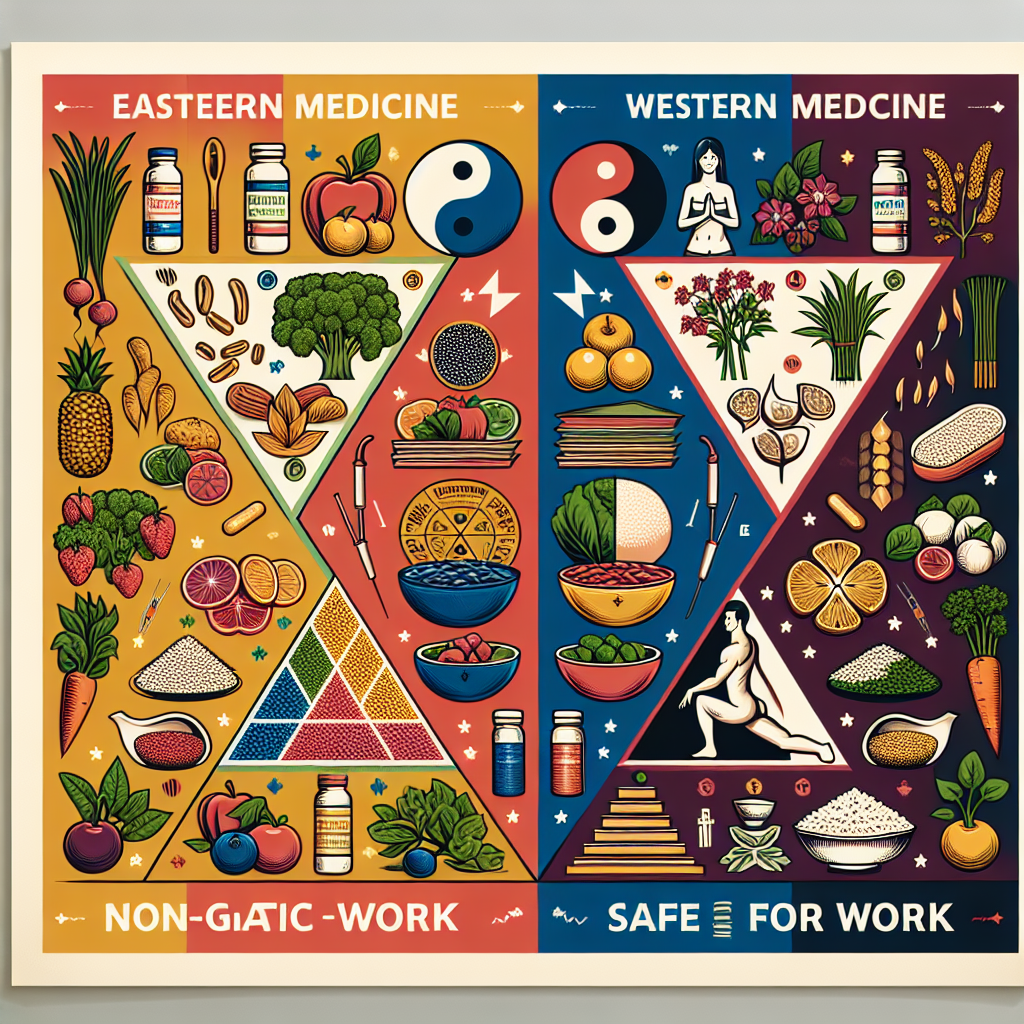The Role of Diet and Nutrition in Managing Chronic Pain: Perspectives from Western and Eastern Medicine
Chronic pain is a pervasive issue affecting millions globally, with far-reaching implications on daily life and overall well-being. While pharmacological interventions and physical therapies have traditionally been the go-to treatments in Western medicine, there’s growing interest in the role of diet and nutrition. This interest is paralleled in Eastern medicine, where dietary guidance has long been intertwined with holistic approaches to health. This article delves into the roles diet and nutrition play in managing chronic pain, comparing and contrasting the perspectives and methodologies of Western and Eastern medicine.
Understanding Chronic Pain
Chronic pain is defined as pain that persists for more than three months, beyond the expected period of healing. It can result from various conditions such as arthritis, fibromyalgia, neuropathy, and other chronic illnesses. The complexity of chronic pain often necessitates a multi-faceted treatment approach, encompassing physical, psychological, and nutritional interventions.
Western Medicine: The Nutritional Angle
In Western medicine, the focus has traditionally been on symptom management through pharmacological means—NSAIDs, opioids, antidepressants, and anticonvulsants. However, there’s a growing recognition of the role that diet and nutrition can play in managing chronic pain.
1. Anti-Inflammatory Diets
Chronic inflammation is a common pathway in many pain conditions. Diets rich in anti-inflammatory foods—like the Mediterranean diet, which includes fruits, vegetables, whole grains, fish, and healthy fats—have shown promise in reducing chronic pain.
– Omega-3 Fatty Acids: Found in fish, flaxseeds, and walnuts, omega-3s have potent anti-inflammatory properties. Research suggests they can reduce pain and inflammation in conditions like rheumatoid arthritis.
– Antioxidants: Foods rich in antioxidants—like berries, nuts, and green leafy vegetables—help combat oxidative stress, another contributor to chronic pain.
2. Nutritional Deficiencies
Certain nutritional deficiencies can exacerbate chronic pain. For example, vitamin D deficiency has been linked to musculoskeletal pain. Correcting these deficiencies through diet or supplementation is a relatively straightforward intervention with potentially significant benefits.
3. Glycemic Control
High blood sugar levels contribute to inflammation. Therefore, managing blood sugar through a low-glycemic diet—emphasizing whole grains, lean proteins, and non-starchy vegetables—can be beneficial for chronic pain sufferers.
Eastern Medicine: The Holistic Approach
Eastern medicine, particularly Traditional Chinese Medicine (TCM) and Ayurveda, views chronic pain through a holistic lens, emphasizing balance and harmony within the body. Diet and nutrition are considered integral to this balance.
1. Traditional Chinese Medicine (TCM)
In TCM, chronic pain is often attributed to imbalances in Qi (vital energy) and blood flow. Diet is one of many tools used to restore balance.
– Warming vs. Cooling Foods: Foods are classified based on their warming or cooling properties. For instance, ginger and garlic are considered warming and are thought to improve circulation and reduce pain, especially in conditions like arthritis.
– Herbal Medicine: TCM frequently incorporates herbs such as turmeric, ginseng, and white willow bark, which have anti-inflammatory and analgesic properties.
2. Ayurveda
Ayurveda, the traditional medicine of India, emphasizes the balance of the three doshas (Vata, Pitta, and Kapha). Chronic pain is often seen as a manifestation of an imbalance among these doshas.
– Dosha-Specific Diets: Ayurvedic practitioners recommend diets tailored to an individual’s dominant dosha. For example, Vata-related pain might be managed with warm, moist, and grounding foods like stews, while Pitta-related pain might benefit from cooling foods like cucumbers and melons.
– Spices and Herbs: Turmeric, ginger, and ashwagandha are commonly used in Ayurveda for their anti-inflammatory and pain-relieving properties.
Comparative Analysis: Western vs. Eastern Approaches
1. Philosophical Differences
– Western Medicine: Focuses on symptom management and often treats the body as a collection of individual parts. Nutritional interventions are increasingly recognized but are typically adjuncts to primary treatments like medication and physical therapy.
– Eastern Medicine: Takes a holistic approach, viewing the body as an interconnected system. Diet and nutrition are central, not peripheral, components of treatment. The emphasis is on balance and prevention rather than symptomatic relief alone.
2. Scientific Validation
– Western Medicine: Emphasizes evidence-based practice. Nutritional recommendations are typically supported by clinical trials and scientific research. This can sometimes lead to slower adoption of new dietary interventions pending rigorous validation.
– Eastern Medicine: Many dietary recommendations are based on centuries-old practices and observational wisdom. While there is growing scientific interest in validating these approaches, they are often adopted based on tradition and holistic benefits rather than solely on modern scientific evidence.
3. Personalization
– Western Medicine: Personalization is increasingly recognized, particularly with the advent of nutrigenomics—the study of how food interacts with individual genetic makeup. However, many dietary guidelines are still relatively general.
– Eastern Medicine: Highly personalized, with dietary recommendations tailored to an individual’s specific constitution (e.g., dosha in Ayurveda) and the nature of their imbalance.
Integrative Approaches: Bridging the Gap
The growing field of integrative medicine seeks to combine the strengths of both Western and Eastern approaches. For example, a patient with chronic pain might benefit from a comprehensive plan that includes anti-inflammatory dietary guidelines based on Western principles, alongside herbal supplements and personalized dietary practices from Eastern traditions. The goal is to offer a more holistic, effective approach to managing chronic pain.
Conclusion
While Western and Eastern medicines may differ in philosophy and approach, both recognize the significant role diet and nutrition play in managing chronic pain. By leveraging the strengths of both systems, healthcare practitioners can offer more comprehensive, personalized care to those suffering from chronic pain. As research continues to validate the nutritional wisdom of both traditions, the hope is that more integrated approaches will become mainstream, offering relief to those burdened by chronic pain.

